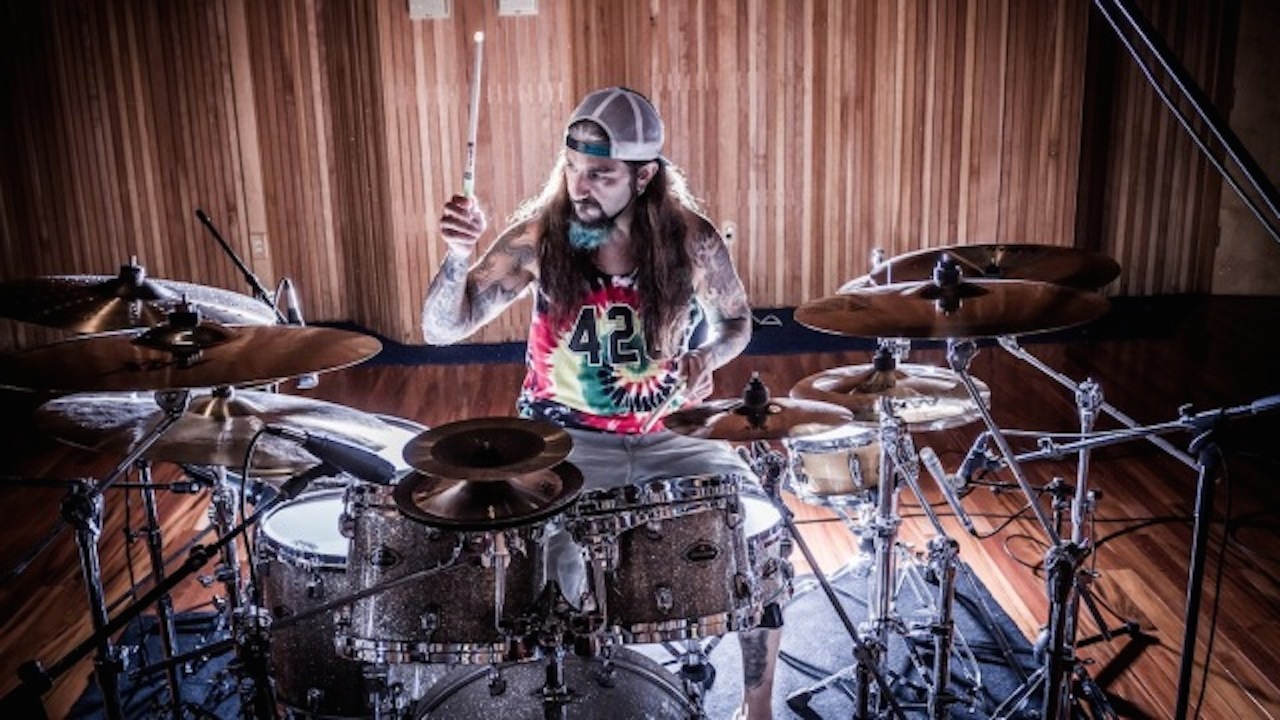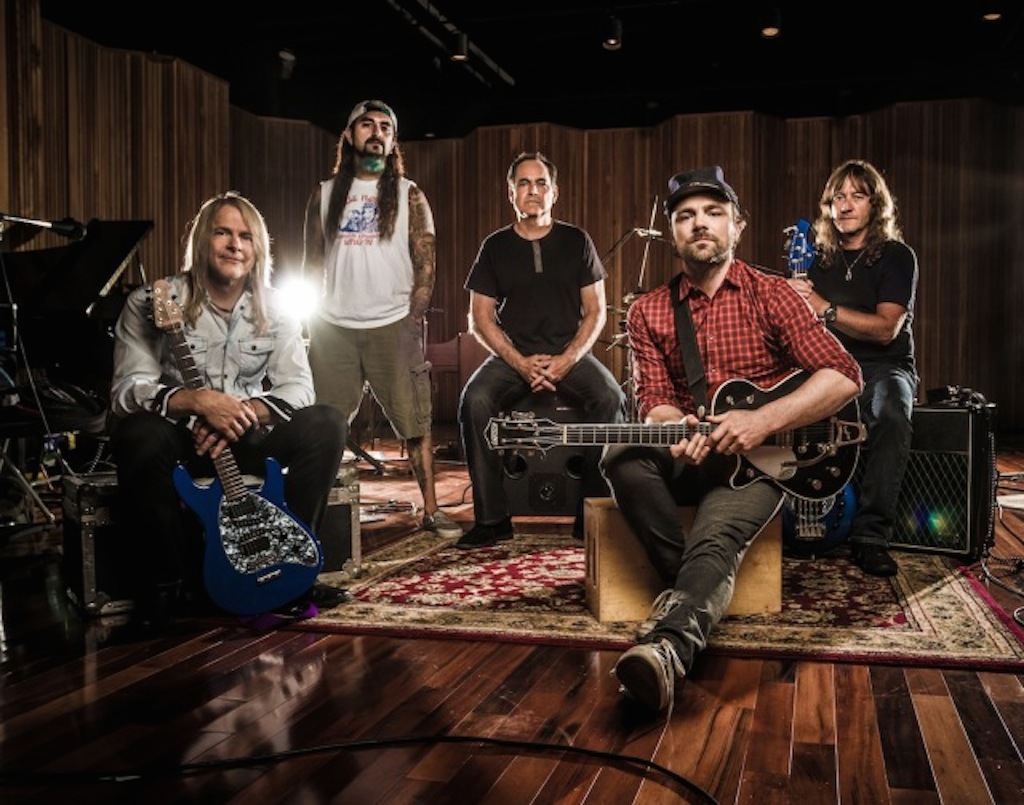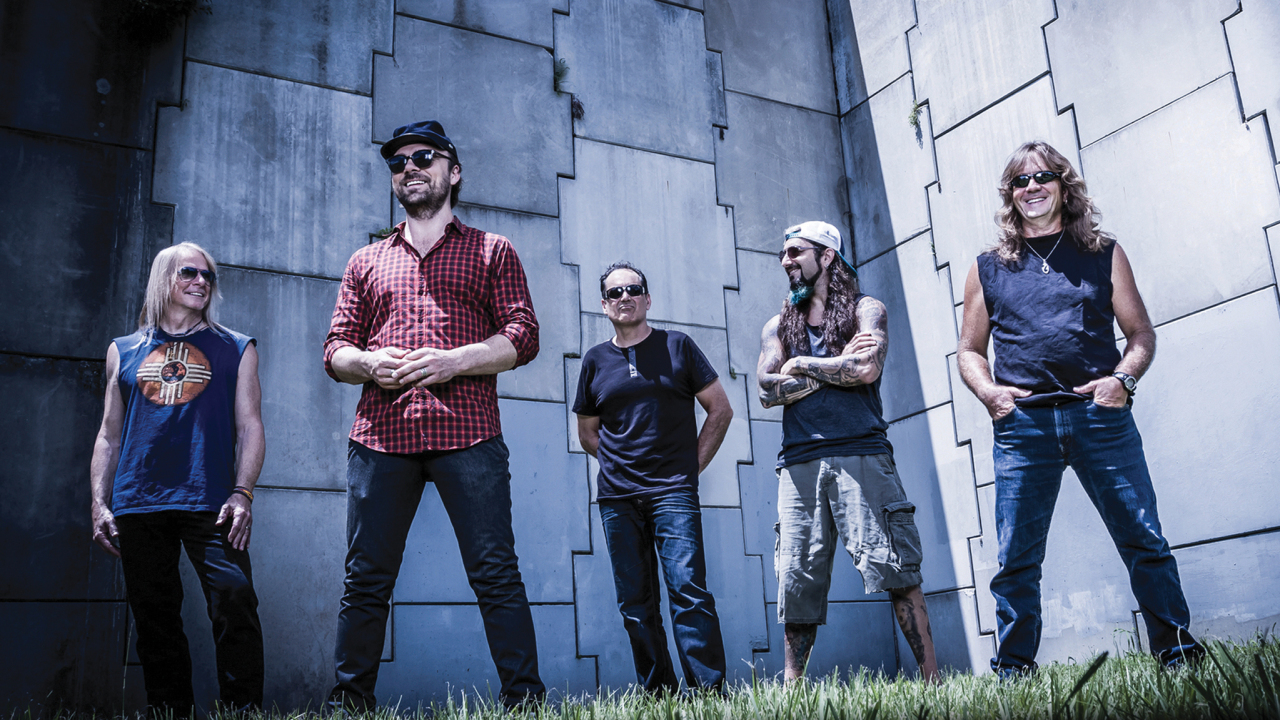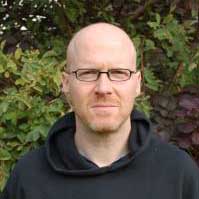If you liked the self-titled 2012 debut album by Flying Colors – the supergroup comprising Mike Portnoy, Steve Morse, Neal Morse, Dave LaRue and Casey McPherson – then you’ll love the follow-up, Second Nature. Why? Well, for a start, it’s more prog. Without a producer to tether them this time – Peter Collins (Rush, Air Supply) was on hand for the debut – they took the opportunity to experiment and extrapolate.
“Seeing as I’m talking to Prog magazine, I’ll tackle that aspect first,” laughs Portnoy on the phone from his home in Upper Saucon Township in Pennsylvania. “I think because we self-produced it, we let things stretch and breathe a little bit more. If we stumbled across a cool theme or instrumental part, whereas last time Peter Collins was there to trim away the fat and keep us focused and streamlined, this time the five of us expanded it a little further. And so everything is a little bit more extreme.”
Executive producer Bill Evans (see boxout below) had a mission statement for the first album: to bring together “virtuoso musicians and a pop singer… to make new-fashioned music the old-fashioned way”. Left to their own devices, for Second Nature, as Portnoy suggests, all the dials have been turned up so that the pop, rock and prog elements are poppier, rockier and proggier.
“Exactly,” he agrees. “This album reminds me of the old days when Queen would make an album like A Night At The Opera or The Beatles would do The White Album – not that I’m comparing us to them in terms of greatness and longevity, just for the stylistic variety. You’d have a hard-rocking song like Helter Skelter next to something bizarre like Wild Honey Pie next to a ballad like I Will or Julia. Flying Colors are like that, where you’re almost getting a different band from song to song.”
Flying Colors might be a triumph for eclecticism and democratic artistry, with equal input from all involved, but Neal Morse doesn’t necessarily concur with the idea that Second Nature sees an increase in their PQ (Prog Quotient).
“It’s a little less proggy and more song-oriented,” he says. Morse, talking from his home studio in Nashville, composes himself after nearly choking on patchouli incense fumes, then compares Flying Colors’ second foray to his other recording and touring outfits. “It’s more melodic, and certainly less quirky, than Spock’s Beard. Transatlantic are a little more spacey. Flying Colors have their own identity. We do songs, but there are a lot of cool instrumentals too. It progresses out from the first one in a really nice way.
“There’s a good balance of proggy stuff and straighter, more melodic songs. There are some virtuoso moments, but Casey brings a beauty and a spirituality with his singing. It’s quite unique.”
McPherson himself veers more towards Portnoy in his assessment of Second Nature’s PQ. “It’s more proggy, for sure, because we didn’t have a producer cutting those parts out,” laughs the Austin, Texas-based vocalist, songwriter and frontman with Alpha Rev, nearly drowning out the burbles of his 18-month-old daughter. “Even though I’m not from the prog world, I was certainly pushing for more of that stuff. So it was refreshing for me to sing melodies over something more difficult than four chords.”
There’s no denying that Second Nature opens and closes with multipartite, 12-minute tracks: grandiose fanfare Open Up Your Eyes and the epic Cosmic Symphony. For Steve Morse, two ornate song suites do not a concept album make, but he does accept that they allowed for as great an emphasis on instrumental work, tempo and key changes and the like as they did tightly constructed songs – although it’s worth pointing out that most of the tracks on the album clock in at around the six‑ or seven-minute mark.
“There’s no theme here like on, say, Tommy,” admits the Dixie Dregs founder and Deep Purple guitar wizard from his home in Ocala, Florida. “But Flying Colors are, more than I imagined, really open to anything. The overriding concern, as with Purple, is that everybody in the band has to like it. We all have to agree or else it doesn’t go. Four out of five isn’t good enough.”
Is it hard to achieve unanimity in a group where virtually everyone has been a band leader? “Let me put it this way,” he chuckles. “The odds of you bringing in an idea and the band playing it untouched are pretty much zero.”
Dave LaRue explains the different working methods for Second Nature compared to the process on their debut album. More fragmented this time, it began with all five convening on Skype to kick around ideas, followed by sessions at Neal Morse’s place in Nashville and Portnoy’s studio outside Philadelphia. The only rule, recalls the bass supremo, was “no songs” until they were all present. “That way,” he points out, “everyone would have input in every song.”
The whole process took 18 months because the sessions had to be scheduled between the members’ various other commitments, but when they actually got together, they worked so quickly, the only issue was keeping up. “It was such a fast process, we were all basically trying to hang on and keep track,” he says. “We’d write, discard, come up with a structure, lay a template, then move on to the next thing. It all went by in a blur.”
Talking of speed, in a band full of virtuoso pyrotechnicians, who’s the fastest gun? Do they have contests? “No!” he laughs. “There’s enough to go round for all of us.”
So there’s no showing off? “Ha! No. This is a band of pretty mature guys and everyone is trying to make the music as good as we can. I subdue my role because it’s appropriate for the music, and we do think compositionally, but there are songs where I get to stretch out. I generally play more than the average bear on bass, but I try and keep it within the context of the song rather than go for a ‘look at me’ moment.”
The greatness of Flying Colors lies, as they all stress, in the line-up’s sheer diversity. Portnoy draws an unlikely comparison with a certain late-70s shlock disco troupe. “We pretty much established that there would be this wide range of sounds and styles with the first album,” he says. “That’s why the name is appropriate, because it’s such a colourful palette. The reason for the diversity is the five of us are all such different types of musicians, with different backgrounds.
“I remember joking around the first album how we were like The Village People of rock, with the cop, the cowboy, the Indian… Flying Colors are like that. We’ve got the metal guy, the prog guy, the pop guy, the jazz‑funk guy and the country guy. A lot of bands have diverse personalities but in this case it’s pretty extreme.”
Neal Morse distinguishes between the band members in terms of their personality types, as well as their contrasting musical identities. “Casey is the sensitive singer-songwriter guy. Steve would be the strong and spiritual one with a very dry sense of humour. Dave is the agreeable and fun one. Mike is the strength of the foundation. I can’t describe myself.”
McPherson, on the other hand, can. “Neal is an incredible arranger,” he marvels. “Listen to the background vocals – it’s like he was part of The Beach Boys at some point. His ability to hear parts and where they go is phenomenal.”
Without a producer, how did they manage to contain such wildly disparate musicians? “It’s not a bunch of 22-year-olds out there on the road,” reminds LaRue. “We’re able to handle most things.”
“We didn’t lose sight of the mission statement from day one, which was to be more of a pop band with prog overtones, as opposed to Transatlantic, which is definitely a prog band with pop overtones,” reiterates Portnoy.
He offers this rationale, and it makes sense: “Flying Colors always wanted Casey to be the centrepiece and focal point, with streamlined songs that were pop in nature and instrumental/prog stuff that me, Steve, Neal and Dave would then sprinkle around them.
“Face it, Neil and I already have two bands together, and Steve and Dave already have two bands together, so the only reason for us to do this is to be able to deliver something different. And it is. It’s us playing in Casey’s playground – Casey who comes from the world of Radiohead and Muse, Coldplay and U2.”
With such a clear-eyed vision for the project, there was little room for conflict. Heated debates, yes. As McPherson puts it, “Bands don’t get any more opinionated!” He adds: “Everybody is very compromising, but at the same time everybody speaks their mind,” alluding to Portnoy’s no-nonsense reputation. “We’ve had many discussions. One of the good things about Mike is he can take those discussions and help finish them very quickly.”

Prog suggests to Steve Morse that McPherson, the youngest in the band at 35, might have been the one expected to be less forthcoming. “On the first album he was trying to be polite, but now we know each other so well, he’s like, ‘Weeell, nah, I’m not feeling that!’” he reveals.
Did McPherson feel insecure at any point, expressing himself with musicians who were effectively his heroes as a young man? “At every point!” he laughs. “It was very weird. These guys are amazing and everything they do is incredible, but as guys in a band, it’s important to communicate on a level playing field. Because if I looked at it like that, I’d be just trying to get their autograph all the time.”
Indeed, it was often the veterans who would defer to McPherson, not least because he and Neal Morse were largely responsible for the lyrics. “It was interesting,” says Morse. “There would be lots of long silences. We’d labour over one word in a line and one of us would be frowning over our papers. Then one of us would go, ‘What do you think about ‘porcelain’?’ And the other guy would be, like, ‘I don’t know. I kind of like it but it maybe reminds me of the toilet.’”
Flying Colors offer an object lesson in how to contain five headstrong musos. “This is actually the nicest, most easy‑going group of guys I’ve ever worked with,” reveals Portnoy. “Most bands have schisms and drama and disagreements. But Flying Colors are very level-headed people who work together as a team. A lot of supergroups fail because it’s a bunch of guys fighting for leadership. In Flying Colors, there is a lot of respect and trust, and we’re not afraid to back down or let somebody else run with the ball.”
The drummer has “grown used to being a bit of a chameleon from project to project, artistically and in terms of my role: am I the leader, a team player or a hired gun? You’ve got to learn to adapt and change.”
Of all the projects he’s been involved in, Flying Colors is the one he’s most pleased with, which is quite a compliment when you consider his CV.
“I have a million records in my catalogue, as you know, but this is surely up there high in my list of favourites,” he says. “I listen to it as an outsider and I’m blown away by the musicality and creativity. I’m proud to be a part of it.”
For McPherson, it is, quite simply, a dream come true. “To become part of this was such a special thing for me,” he says. “I feel so honoured to be able to play with them. They’re my musical mentors.”
Second Nature is released by Mascot on October 6. See www.flyingcolorsmusic.com for details.

Shoulda Coulda Woulda
Bill Evans, Flying Colors’ executive producer, on managing a supergroup.
It was Evans’ intention to do “something different” that led to the formation of Flying Colors. The benchmark in his mind was the “progressive pop” of Rush, Kansas and The Beach Boys circa Good Vibrations, outfits purveying “songs that were prog, but short”. Mike Portnoy, Neal Morse, Steve Morse and Dave LaRue agreed almost immediately to join. All they needed was a singer. Evans says he “looked at over 100”.

